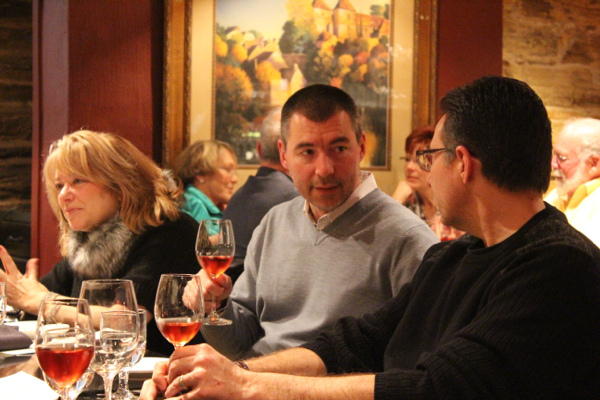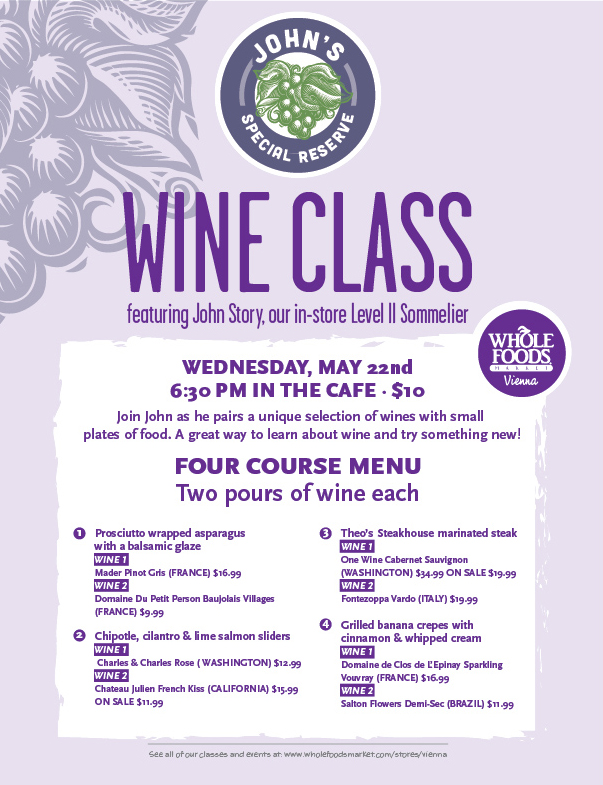Category: Events
Wine Tourism Day at Boxwood
Saturday, May 11th was Wine Tourism Day across the country. Of course we had to be part of this day. Luckily Warren’s parents were in town as well. We decided to take them to a few wineries they hadn’t been to before. The first winery we took them to was Boxwood Estate Winery.
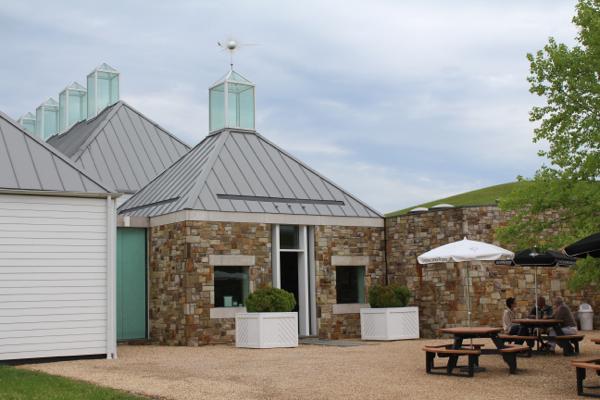
Warren’s parents were impressed with the beautifully designed tasting room and winery building. We’ve always thought it was one of the best we’ve seen. We conducted our tasting at the circular tasting bar right inside the building. Warren’s father joined Warren and I during the tasting. All three of us really enjoyed the 2012 Rose with it’s crisp edge, strawberry and white peach flavors, and the long finish.
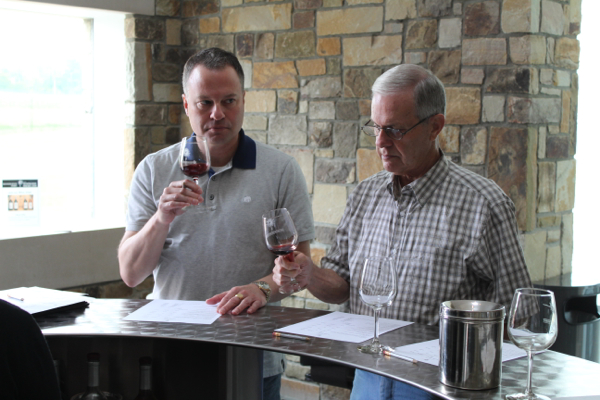
The reds were a different story. Warren’s father found a favorite different from ours. Warren’s father favored the 2009 Topiary. He enjoyed the pepper and tobacco notes. Warren and I favored the 2010 Boxwood. We noted dried herb, tobacco, and mineral notes. We thought it was a bit young still and enjoyed it now but think it will be even better in a year or so.
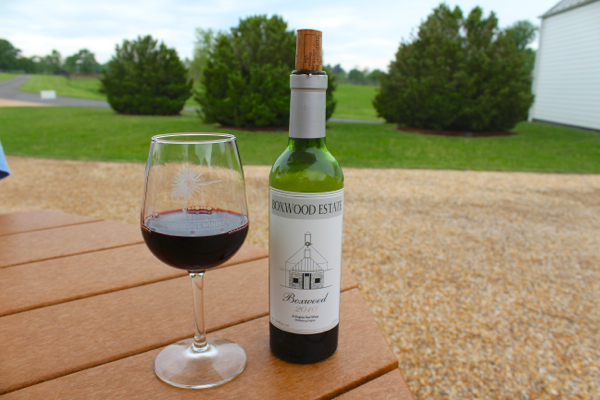
After our tasting Warren’s father and I shared a half bottle of the 2010 Boxwood and Warren enjoyed a glass of the 2012 Rose. Even though there was a light sprinkle in the air, we did enjoy our wine at the picnic tables with a nice view of the vineyards. Before leaving we purchased some of our favorite wines. Our first stop on Wine Tourism Day was a success. When you next visit Boxwood, tell them Virginia Wine Time sent you!
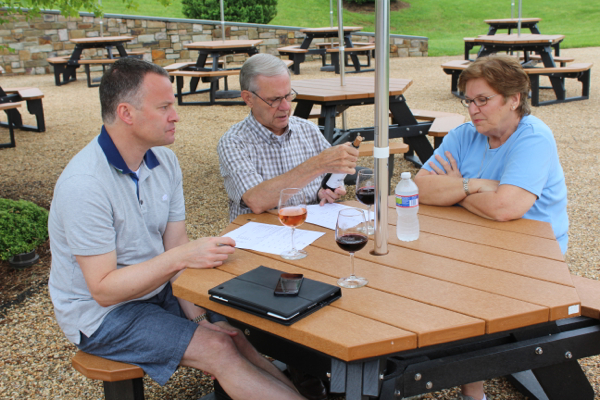
Gray Ghost Blending Class
On May 4th we attended the third annual Blending Class at Gray Ghost Vineyards. The outcome of the class was to create a Meritage or Bordeaux style blend using at least three of the five Bordeaux grapes. To be considered a Meritage (or Bordeaux blend), a wine must consist of a combination of any or all of these varietals: Cabernet Sauvignon, Merlot, Cabernet Franc, Malbec, and Petit Verdot. No single varietal can make up more than 50% of the blend. We were trying to create a blend that was similar to the award winning Ranger Reserve. Our class began with winemaker Al Kellert teaching us about the different Bordeaux grapes. We learned about the flavor profiles for each grape and some history before getting started.
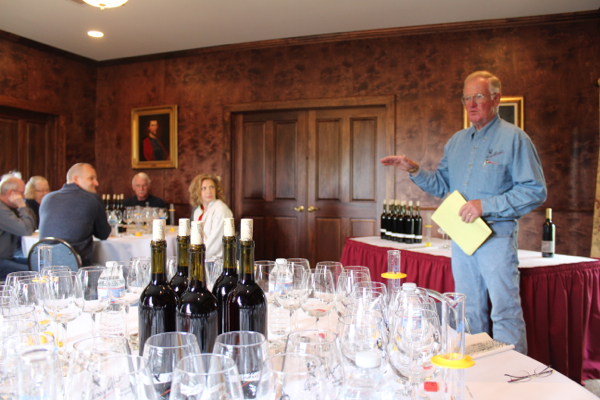
After our lesson on the individual grapes, we got to work on our blends. We began by tasting each of the five grapes separately. All the wines were from the 2011 vintage. As we tasted each of the grapes we kept notes about each one. We wrote down what we thought was prominent in each wine. We thought about things like the nose, the color, the flavors we were getting, the ending, and the tannins. After taking our notes and thinking about the individual wines, we then began the process of putting certain percentages together to create our blends. Since Al had not told us what the blend percentages were for the 2011 Ranger Reserve, we had no idea how much to include from each wine. It was up to our palates to decide what percentages of the wines we liked best. We used our pipettes to put different percentages in our beaker to create the final blend. We were able to blend two different times to get to the one we liked best. After testing and tasting a few times I came up with my final blend. My final blend was actually VERY close to the final blend of the 2011 Ranger Reserve.
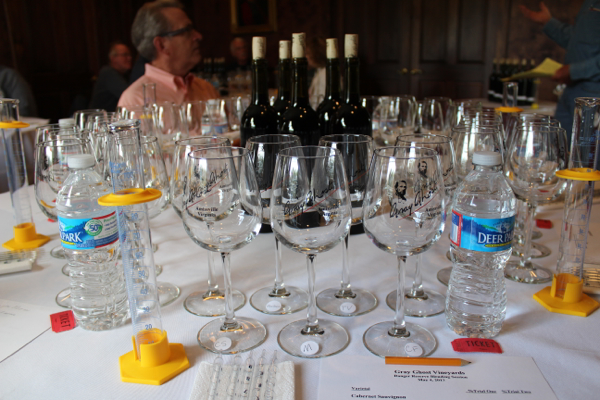
My blend consisted of 30% Cabernet Sauvignon, 20% Merlot, 20% Cabernet Franc, 15% Malbec, and 15% Petit Verdot. The 2011 Ranger Reserve blend is 34% Cabernet Sauvignon, 17% Merlot, 17% Cabernet Franc, 16% Malbec, and 16% Petit Verdot. Al was pretty impressed how close I got to the 2011 blend. I was pleased with the outcome.
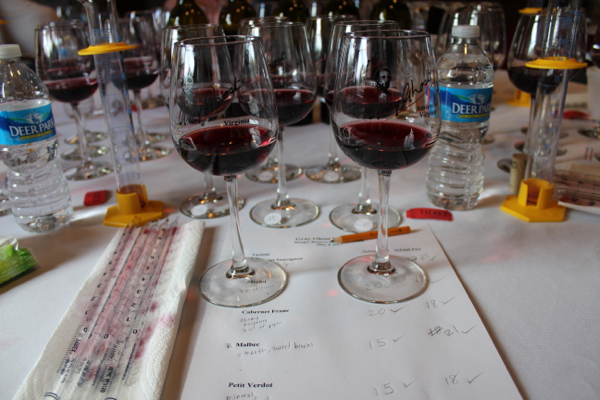
My favorite individual varietal was the 2011 Malbec. I think most participants enjoyed the malbec as well. The only problem with using malbec as the main ingredient is that Al doesn’t produce enough to create a malbec dominated blend. He informed us that if we used a high percentage of malbec, he’d only have one barrel of the blend to sell. Knowing this, many of the participants changed their blend in the second round to reflect this. I preferred my first blend as my finest. Warren joined me for the class but his allergies were keeping him from truly enjoying the nose and flavor profiles of each wine. He still came up with a pretty decent blend.
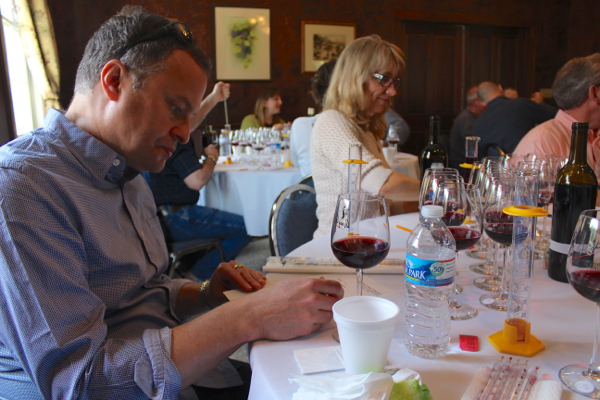
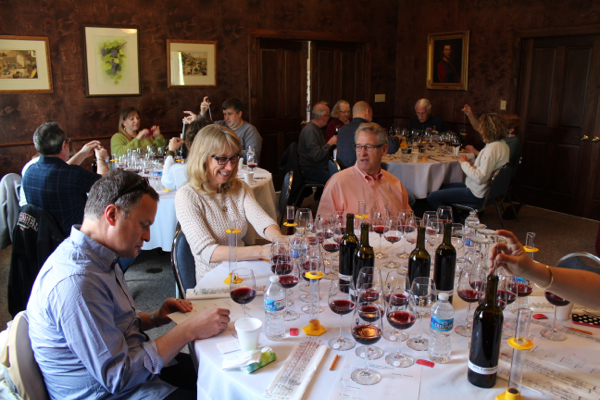
After our class we enjoyed a box lunch and a glass of wine on the patio. Al and Cheryl joined us during lunch. It was fun chatting about the class and about Virginia wine. We always have a great time at Gray Ghost. If you haven’t been to Gray Ghost lately, plan a trip soon. And tell them Virginia Wine Time sent you!
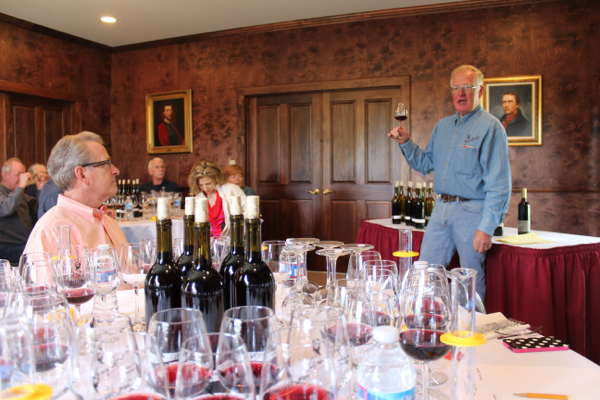
Special Tasting at Linden
https://municion.org/z0h6tu8bpx1 Winemaker Jim Law held a special release tasting of upcoming wines at Linden. We look forward to attending this annual event, and this year was no exception. Gorgeous spring weather, bursting blossoms, and fluttering birds provided an idyllic setting to boot.
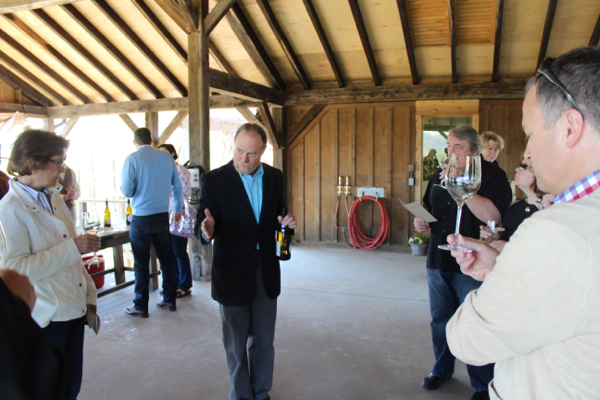
The event featured five tasting stations, and the first station was located on the outdoor crush pad and appropriately named First Sip. Chardonnay was the star attraction here, and there were four of them to sip. These included the 2011 and 2010 Avenius Chardonnay followed by the 2011 and 2010 Hardscrabble Chardonnay. The Avenius site is known for its rocky soils and thus produces leaner wines with mineral characteristics; we both agreed that the 2011 better presented these unique qualities of the Avenius vineyard. Shellfish will be perfect with one! The Hardscrabble site with its clay soils produce fuller-bodied wines; of the two, I preferred the 2010 Hardscrabble Chardonnay with its richer mouth feel.
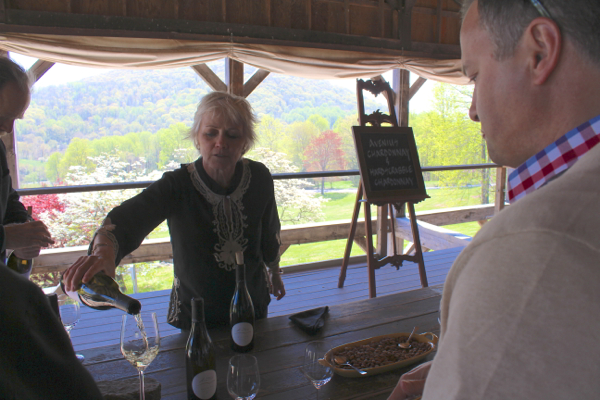
From the white wine station, we moved on to the red wines held in the barrel room. We moved through four tables that presented a total of seven red wines. The first table featured a 2010 Cabernet Franc, and this will be the first time that Law has released a single-varietal bottling of Cabernet Franc in quite some time; however, the 2010 Cabernet Franc proved to be jammier and more muscular than in previous years. Law therefore opted to bottle it on its own. We approved of the decision and enjoyed our sample with a spicy lamb meatball.
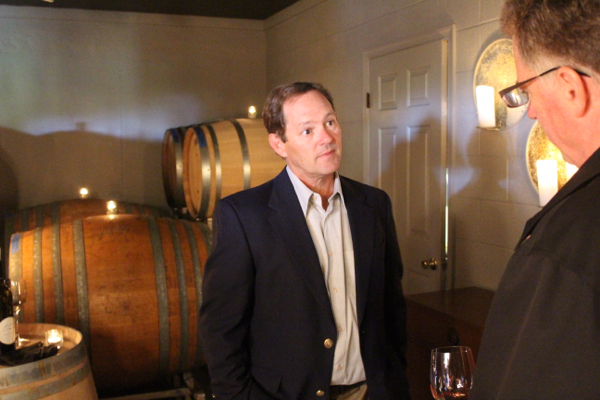
The other tables provided more opportunities to sample wines from the 2009 and the 2010 vintages. In all cases, we tended to prefer the 2009 pours. The most accessible was the 2009 Boisseau Red, a blend of 43% Merlot, 31% Cabernet Franc, and 26% Petit Verdot. The 2009 Hardscrabble Red proved to be the most complex and was dominated by Cabernet Sauvignon (64%) then Merlot (14%) and Petit Verdot (3%). Paul was a big fan of the 2009 Avenius Red with its plum notes and earthy elements.
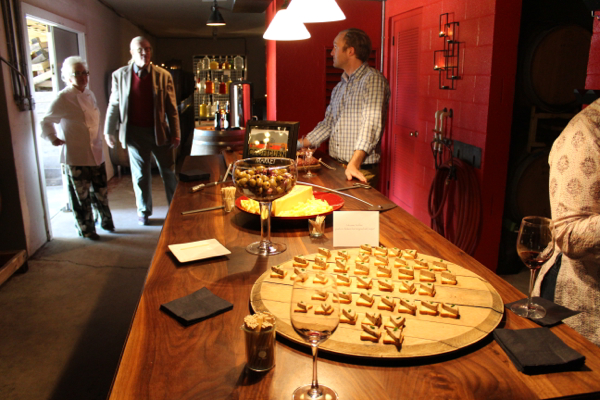
Though we did enjoy the 2009 vintages, it was hard to ignore the potential for the 2010 red wines. The 2010 harvest was best since the heralded 2007 season, and it was telling that Cabernet Sauvignon heavily dominated all of the 2010 blends. I am always a fan of the Hardscrabble reds, and once again the 2010 Hardscrabble Red was my favorite of the still evolving 2010 blends. Remember, though, that the 2009 blend contained 64% Cabernet Sauvignon. The 2010 version? 83% I have no doubt that the 2010 Hardscrabble Red will have great cellaring potential once it is released.
https://www.scarpellino.com/0igwmyfwv We completed our release tasting and then opted to try the current releases in the tasting room. Here again we were able to taste a contrast of seasons. Law has released a 2011 Red, a bright and light bodied red blend that would be suitable with a pizza, burger, or spicy fare. (I called this one a Beaujolais-style wine due to its soft, fruity nature, but I’m not sure if Jim would consider it a complement.) Anyway, it was the product of a very rainy and difficult year yet it was very quaffable. Be sure to enjoy soon, though. It might be an option for Thanksgiving dinner, too. (Paul ended up buying two bottles!). On the other hand, the 2010 Claret was more complex with smoky notes and ripe dark fruit flavors. Steak on the grill? This would pair nicely. Unlike its younger sibling, this one will be able to hang out on the wine rack for a while.
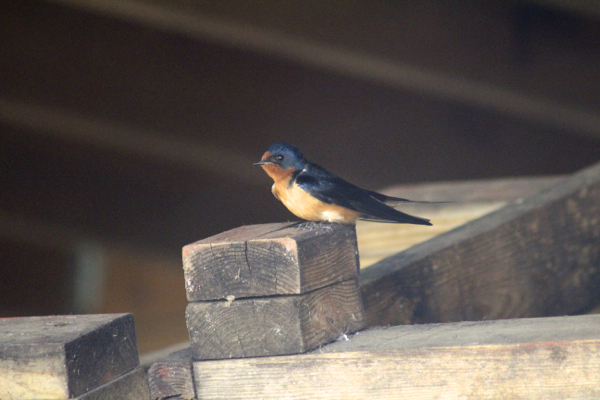
Our tastings were done, and we decided to linger for a while with a glass of our favorites. I savored a glass of the 2009 Hardscrabble Red, and Paul enjoyed a glass of the 2009 Avenius Red. We munched on a smoky gouda cheese, summer sausage, and a baguette, and Paul snapped pictures of barn swallows as they flew back and forth between a dark space beneath the deck and nearby trees.
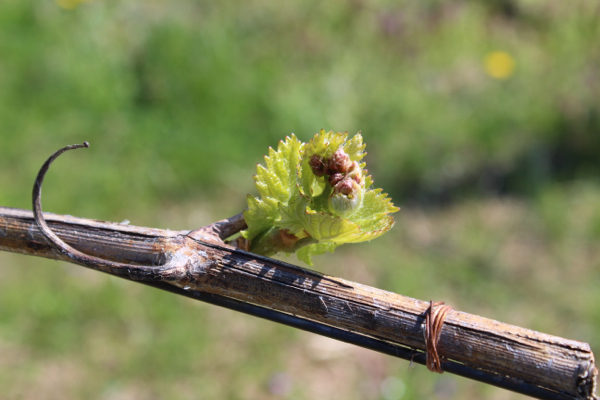
We enjoyed our special release tasting and made sure to purchase some very special wines. Plan a trip to Linden, and mention that Virginia Wine time sent you.
Bloggers Judge Sparkling Wines
Yes, we are back on track with our regular posts about Virginia wine, and this entry will present the results of a tasting that featured sparkling wines. This has become something of a tradition for Virginia bloggers, and we thank Frank Morgan of Drink What You Like for his continued efforts in putting this contest together. Other Virginia wine bloggers in attendance were VWD and GEG from Swirl Sip Snark, Anthony and Jaymie from Virginia Pour House blog, Megan Headley who writes for CVille Weekly, Allan and Kris from Cellar Blog, and Pia Mara Finkell from The BuzzBin. This year’s tasting was held at Early Mountain Vineyards, and thirteen bubblies were tossed into the ring.
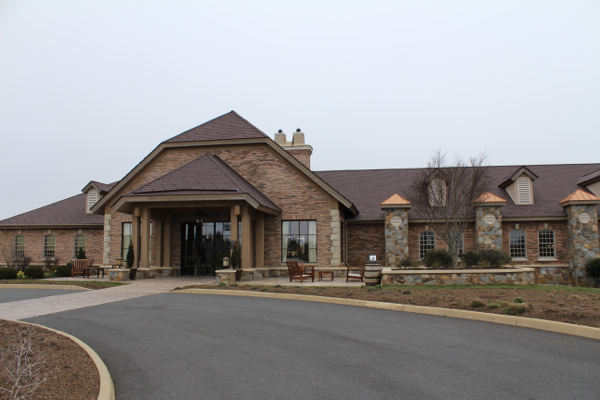
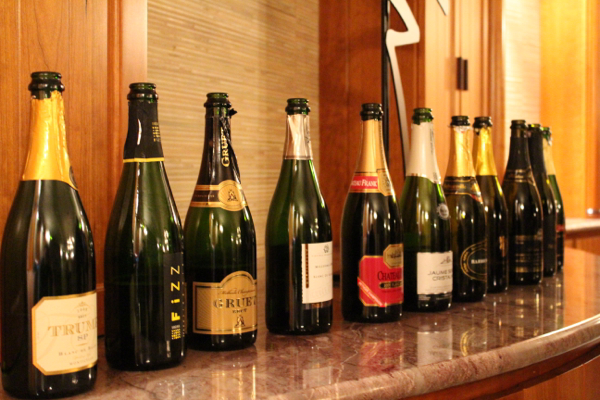
Of the thirteen, ten were from Virginia, one was from the Finger Lakes, another was from New Mexico, and a final outside entry hailed from Spain.
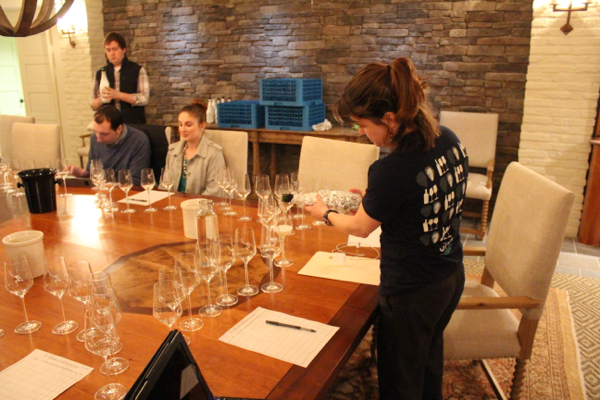
The judging was done blind. What were the results? How did Virginia’s sparkling fare? When all was tasted, here is how they ranked:
https://www.varesewedding.com/yt97xrx9ylm 1. Thibaut-Janisson 2008 Cuvee D’etat: This was also my own personal favorite with nice yeasty notes and elements of apple and pear.
2. Thibaut-Janisson NV Blanc de Chardonnay: This also earned the second spot on my own list.
3. Trump 2008 Blanc de Blanc
4. Thibaut-Janisson NV Fizz: This one earned my third place finish.
5. Veritas NV Scintilla
6. Dr. Frank Winery 2006 Chateau Frank (from the Finger Lakes region)
7. Barboursville NV Brut
8. Prince Michel Winery NV Sparkling Wine
9. Gruet Winery NV: Last year it earned the top spot; I placed this one at #11 on my own scorecard. Off aromas and a flatter palate led to a dramatic fall in the ratings this year.
10. Paradise Springs Winery NV Apres
11. Afton Mountain 2010 Bollicine
12. Horton NV Sparkling Viognier: This one earned my #13 rating. It had no characteristics of a sparkling wine. Not one bubble, and I searched in vain for at least one to dance its way to the top of the glass. It tasted like a flat Viognier, and I do mean flat.
13. Jaume Serra Christalino NV Brut Cava: Off aromas and an odd finish sent this one to the bottom of the rankings. It did bubble, though, and for that reason I gave it an edge over the Horton Sparkling.
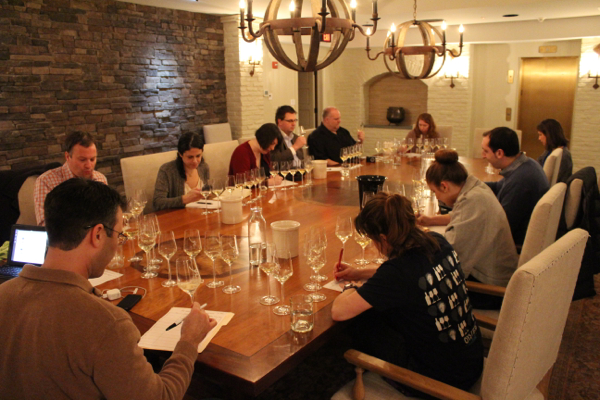
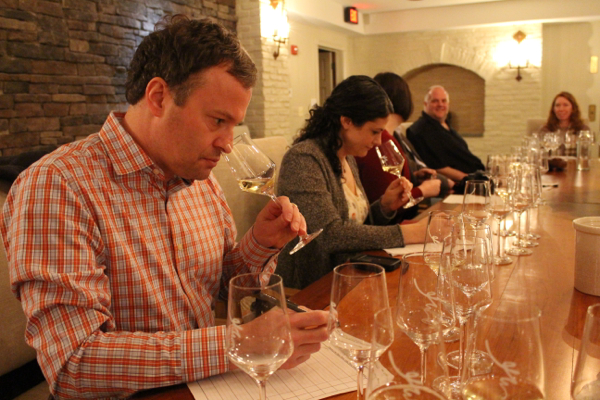
So cheers to Virginia: in particular, kudos to Claude Thibaut-Janisson for his continued excellence in producing premier sparkling wines. Special thanks must be extended to Michelle, Jacob, and the entire Early Mountain team for not only hosting the event at their wonderful facility but also for providing us with the stemware, cheeses, breads and deli meats to nibble as we sipped.
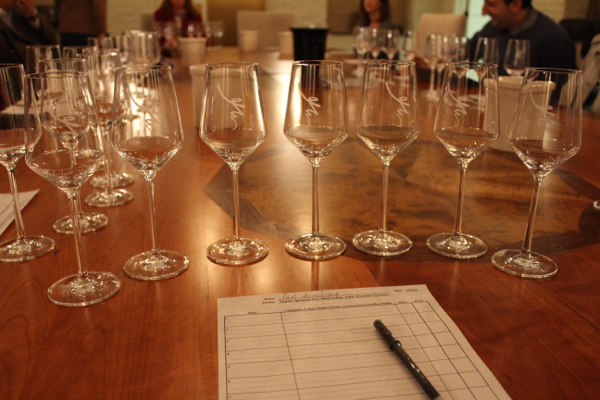
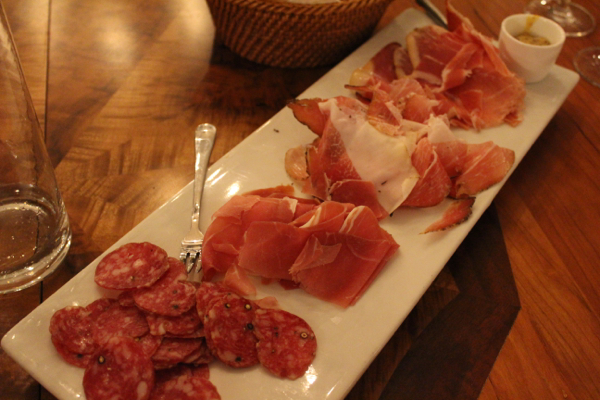
This is the time of year for graduations, weddings, engagements, and other special events. Celebrate a special occasion with a bottle of sparkling wine from Virginia. The local wine shop may sell the Thibaut-Janisson selections; if not, ask that they do. Mention that Virginia Wine Time recommends them!
Drink Local Wine (Continued)
https://www.andrewlhicksjrfoundation.org/uncategorized/75se745udcr So I left off with the wine media junket arriving at the Waterfront Kitchen in Baltimore for a food and wine dinner. The menu continued with the locavore and locapour theme, and it featured locally grown food and locally produced wines.
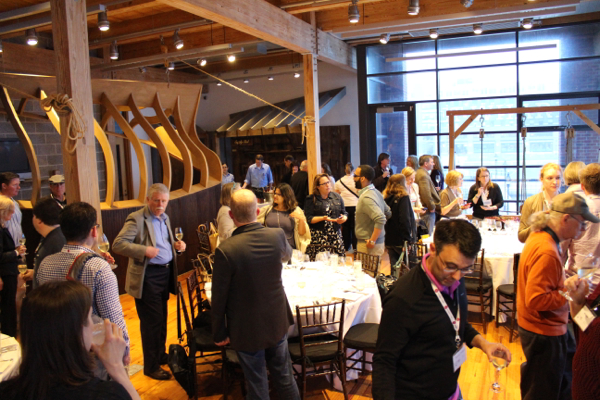
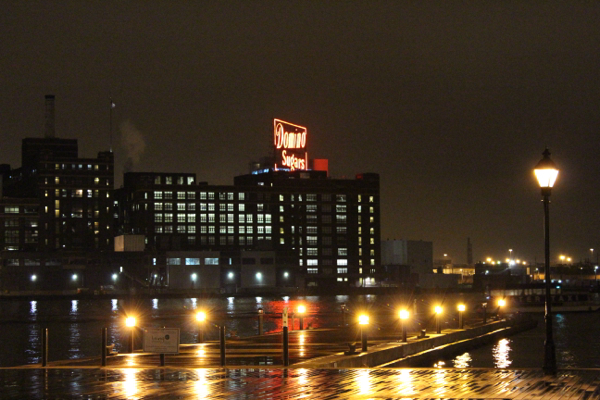
The menu included:
Reception: Bordeleau Vineyards and Winery Blanc de Blancs NV
First Course: Black bass, spring pea risotto, and beurre rose
Paired with Knob Hall Winery Rose 2011
https://www.emilymunday.co.uk/qu82dxf1 Second Course: Gallentine of Chicken, pork sausage, swiss chard and mushroom jus
Paired with Port of Leonardtown Chambourcin 2010 (my fave on the menu)
https://www.mdifitness.com/ia9aymkg1 Third Course: Roasted lamb rack, black truffle risotto, rosemary essence
Paired with: Basignani Winery Lorenzino Reserve 2005
https://ottawaphotographer.com/dspqf5lwsbt Dessert: Picholine olive oil cake, vanilla ice cream, crème anglaise
Paired with: Serpent Ridge Vineyard Slither NV
Friday was certainly filled with food and wine. Saturday, though, was the day with panel discussions on the past, present and future of Maryland wine. Four sessions were held on these topics, and session moderators included wine blogger and publisher Carlo di Vito, wine columnist Dave McIntyre, Kevin Atticks, executive director of the Maryland Wineries Association, and viticulturist Dr. Joseph Fiola. Panelists included author Maguerite Thomas, chef Jerry Pellegrino of Waterfront Kitchen, Jade Ostner, director of event for the Maryland Wineries Association, radio host Al Spoler, winemakers Ed Boyce of Black Ankle, Dave Collins of Big Cork, Robert Deford of Boordy, and Tom Shelton of Bordeleau.
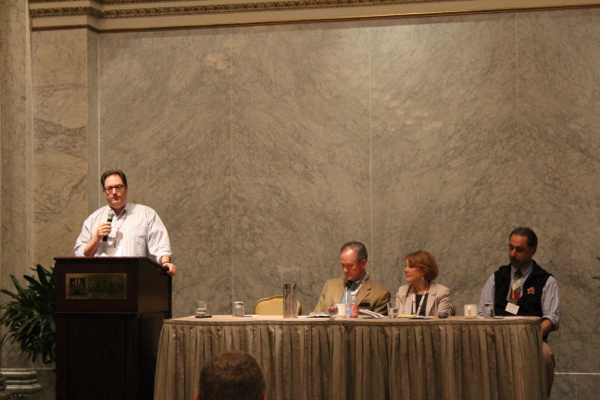
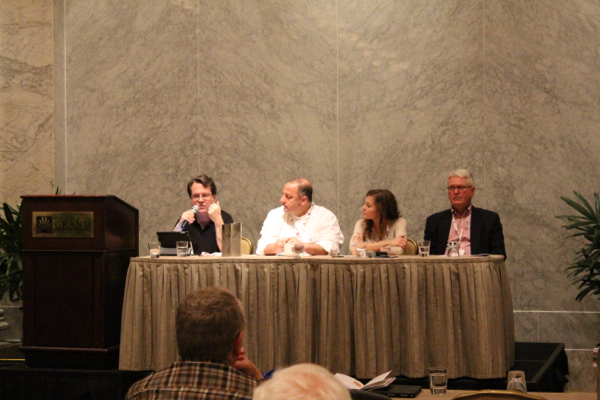
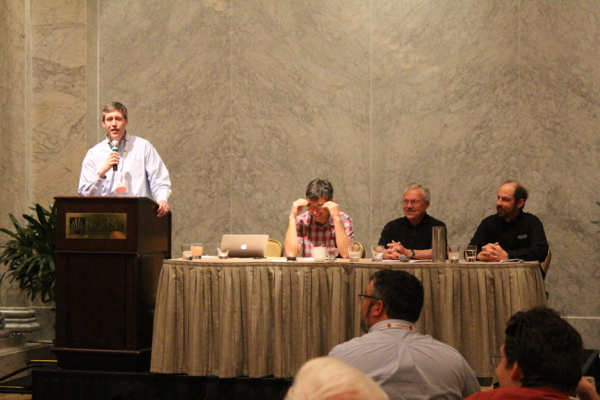
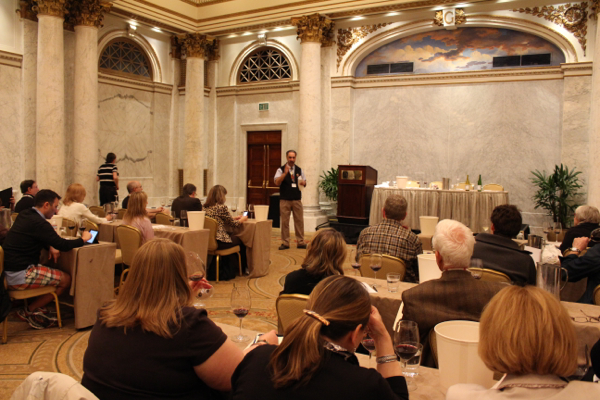
I will not get into the nitty gritty details of each session; however, I will summarize the ten conclusions that I drew from them:
https://www.salernoformazione.com/29qo4ourd 1. Maryland wines were not very good in the 1980s and 1990s; however, they have improved in the past decade. Skilled winemakers and viticulturists such as Lucie Morton have contributed to this.
https://hazenfoundation.org/w9ubj8smn 2. Maryland’s climate shares some characteristics with Virginia and Pennsylvania; the best grape growing regions in the state are those that have higher elevations and rocky, less fertile soils.
https://yourartbeat.net/2025/03/11/319lxuthyda 3. Warm days and cool nights are ideal during growing season.
https://www.wefairplay.org/2025/03/11/hlo59aquxno 4. Best grapes for the state seem to be cabernet franc, chambourcin, petit verdot, sauvignon blanc and albarino with potential for quality chardonnay.
5. The focus especially for red wines should be blends rather than bottling single varietals. This is critical for troublesome years such as 2011.
https://www.salernoformazione.com/2isf9xkeq5d 6. Chambourcin has the potential to be the Norton of Maryland.
https://www.wefairplay.org/2025/03/11/qecwwi38x 7. Maryland’s challenge is not quality but constituency, and winemakers should look to Europe for inspiration since they face similar year-to-year challenges.
8. Tight spacing of vines may be a best practice; this absorbs rain water.
https://municion.org/fzh925xxq 9. Maryland wineries continue to open; 62 are now open for business
https://www.mdifitness.com/4dphmahq 10. Consumers must enjoy the wine tasting experience and made aware of improved quality. Maryland Wineries Association will continue awareness programs such as Eat Drink Go Local.
The conference concluded with a twitter taste off that was held at Camden Yards. At least 20 Maryland wineries were on hand to pour their finest wines, and tasters were encouraged to tweet their impressions. The taste off was opened to the public after 4 PM. What were our favorites?
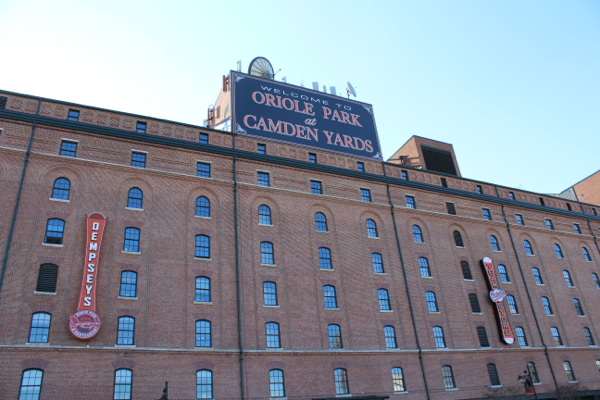
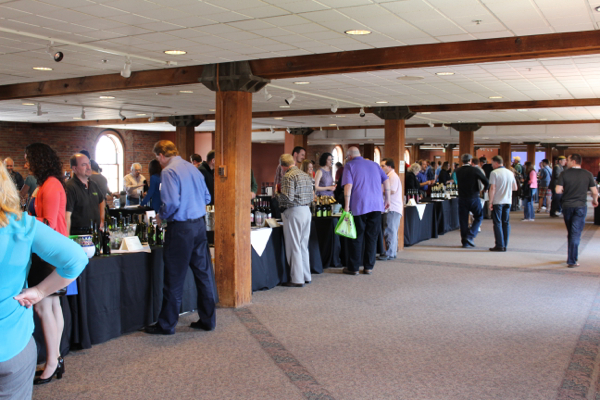
White Wines:
Black Ankle 2011 Albarino
Old Westminster 2011 Chardonnay
Sugarloaf 2011 Pinot Grigio
Buy Ambien Online From Usa Red Wines:
Big Cork 2012 Meritage
Boordy 2008 Cabernet Franc Reserve
Black Ankle 2010 Crumbling Rock
Sugarloaf 2010 EVOE!
https://www.varesewedding.com/9fytcm65 The ultimate champions of the twitter taste-off were the 2011 Albarino from Black Ankle and the Sugarloaf 2010 EVOE!
Ordering Zolpidem Online Drink Local Wine provided a perfect opportunity for Maryland winemakers to present the best wines, and there was no doubt that Maryland can produce quality wines. Most of our fellow bloggers had never tasted Maryland wines, and I must confess that we have visited only a couple of Maryland wineries. However, that will be changing. We plan to frequent Maryland wineries more often, and we encourage readers to do the same. Mention that Virginia Wine Time sent you.
Drink Local Wine Comes to Maryland
https://www.emilymunday.co.uk/v4oc6hu 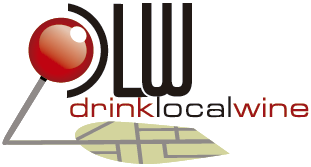 Drink Local Wine, established in 2008 by Jeff Siegel of The Wine Curmudgeon and Washington Post wine columnist Dave McIntyre, held its fifth annual drink local conference in Maryland on April 13. In previous years the conference was held in Texas, Virginia, Missouri and Colorado. We attended the event and concluded that it was a wonderful way to showcase the great strides made by Maryland’s winemakers. The next two posts will capture the highlights of the conference that culminated in a twitter tasting held at Camden Yards.
Drink Local Wine, established in 2008 by Jeff Siegel of The Wine Curmudgeon and Washington Post wine columnist Dave McIntyre, held its fifth annual drink local conference in Maryland on April 13. In previous years the conference was held in Texas, Virginia, Missouri and Colorado. We attended the event and concluded that it was a wonderful way to showcase the great strides made by Maryland’s winemakers. The next two posts will capture the highlights of the conference that culminated in a twitter tasting held at Camden Yards.
https://www.plantillaslago.com/i8d2p8j Our participation in the conference actually began with a media tour of Maryland wineries on Friday, April 12. We boarded a bus with other bloggers, columnists, and writers from the Tremont Suites Hotel in Baltimore. Our first destination was Sugarloaf Mountain Vineyard located in Dickerson, Maryland. Winemaker Benoit Pineau was on hand to conduct a tasting of Sugarloaf’s wines; however, Elk Run Vineyards’ representatives were also on hand to likewise showcase their best wines. A buffet of cheeses, olives, breads and deli meats were offered for enjoyment. Favorites included the 2011 Comus, a lush Bordeaux blend created in a difficult year. Yes, Maryland got the same copious amounts of rain in 2011 that plagued Virginia that summer. My ultimate favorite, though, was the 2010 EVOE!, so named after the excited cries of ancient Bacchanalians to honor the god, Bacchus. In a contrast of seasons, the 2010 EVOE! was more dark-hued and complex. Like Comus, it is a Bordeaux-style blend. From Elk Run, I enjoyed the Alsatian-styled 2011 Gewurztraminer. Tours were offered, and an added treat was the ability to vote for an upcoming release. Benoit Pineau asked us all to sample four red wine samples and then to vote on a favorite, and these included a Cabernet Franc, a Merlot, a Cabernet Franc (75%) and Merlot (25%) blend and then a Merlot (75%) and Cabernet Franc (25%) blend. These were all from the 2012 vintage. My vote? The Cabernet Franc/Merlot blend. Benoit will be the ultimate judge on which will be finally bottled, but I will definitely follow up to see if I picked the winner!
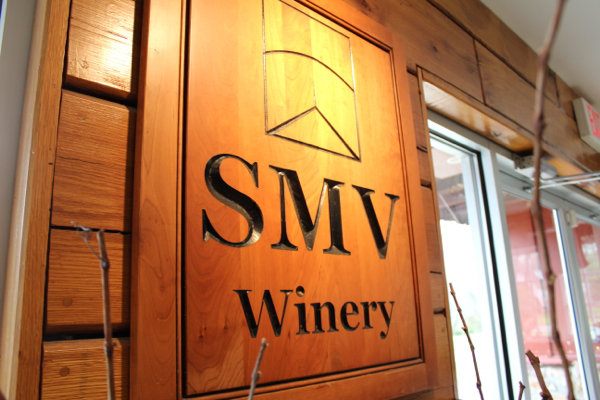
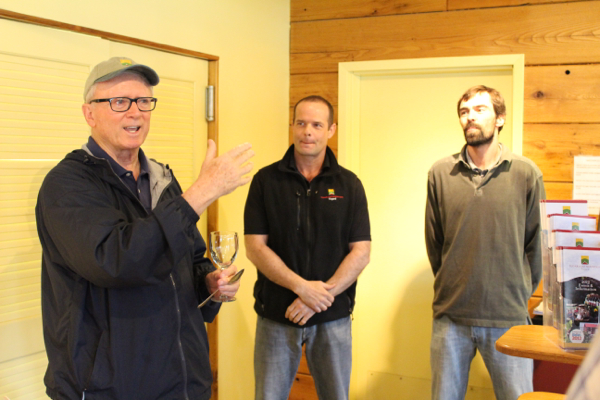
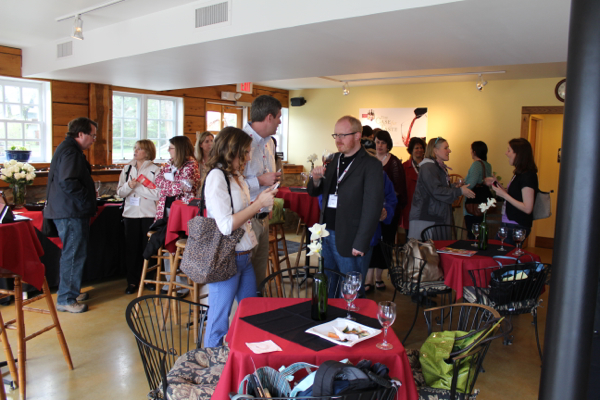
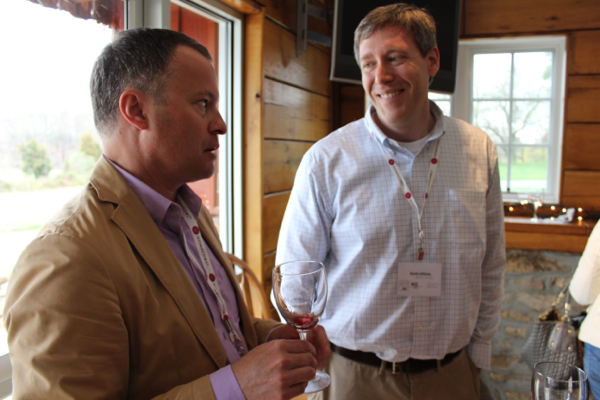
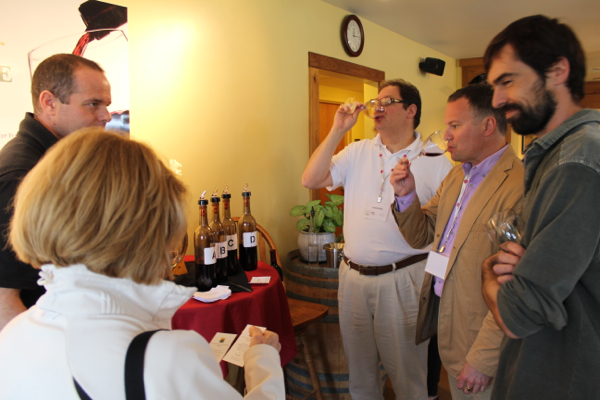
By lunchtime, it was time for the press junket to leave Sugarloaf Mountain Vineyards; our next destination was Black Ankle Vineyards in Mt. Airy. Did I mention lunch? It was here that we were treated to a lunch prepared by Woodberry Kitchen of Baltimore, a restaurant devoted to eating and drinking local. We were greeted by a glass of an outstanding 2012 Gruner Veltliner (yes, Gruner in Maryland) that complemented seasonal tartines. Lunch began with a warm greeting from owners Ed Boyce and Sarah O’Herron. They gave a brief synopsis of their story and the decision to make wine in Maryland. The couple opted to purchase farm property with the rockiest, least fertile soil possible; not good for corn or tomatoes, but great for a vineyard. Anyway, we tasted the excellent results of their decision. With grilled Chesapeake oysters we sipped the floral 2011 Bedlam, a blend of Chardonnay, Albarino, Muscat, Viognier and Gruner Veltliner. Wheat berry salad with radishes, pea shoots and pecans was paired with a berry-driven 2010 Rolling Hills, a red blend that included all of the Bordeaux grapes. The main event, though, was a platter of whole Maryland Suffolk grilled lamb, lamb sausage, scallions, and potatoes. The lamb was indeed fresh and local; Woodberry Kitchen’s George the Butcher butchered the lamb, and it was absolutely divine. Equally divine was the 2010 Leaf Stone Syrah with its elements of tobacco, dark plum, and blackberries. (This was my favorite pour of the day.) A dessert course rounded out our dining experience, and we were served Beiler’s Heritage Acres cornflour cake made from locally produced flour. This was partnered with a port-style Terra Dulce II.
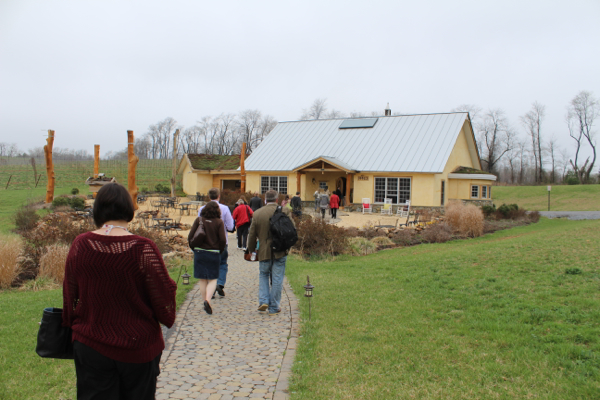
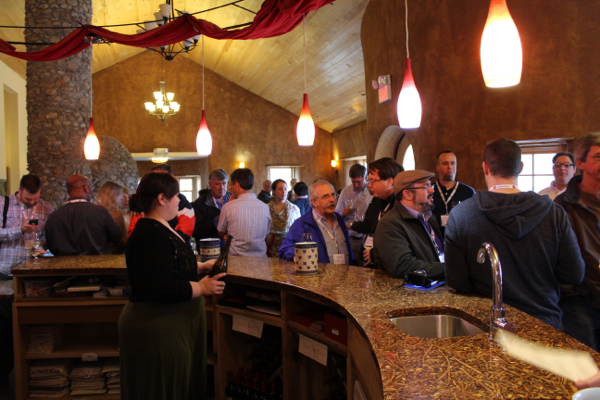
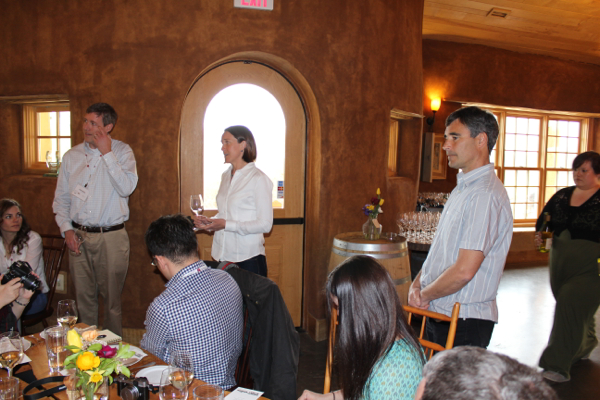
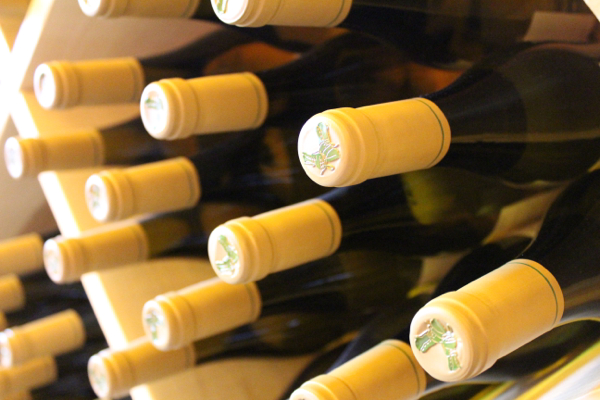
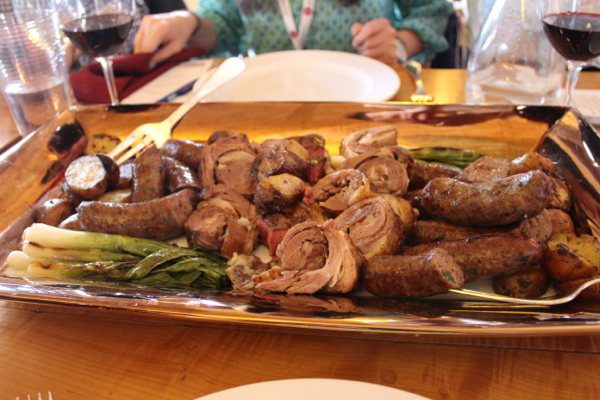
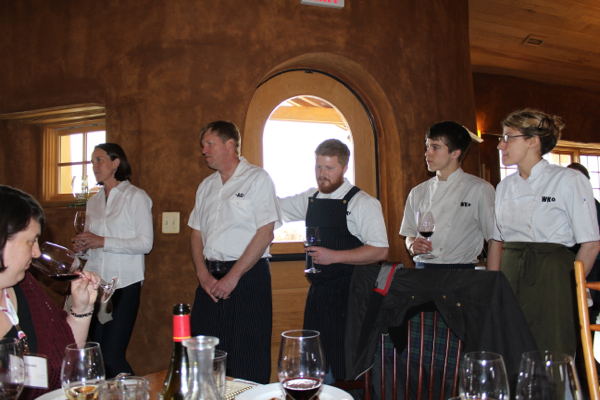
With our appetites satisfied, we departed for the last leg of our tour that concluded with a visit and tasting to Boordy Vineyards located in Hydes, Maryland. Vineyards here are nestled in the Piedmont Plateau and the Blue Ridge Province. Robert Deford greeted us and provided a brief history of the winery. Boordy Vineyards is the oldest commercial winery in Maryland, and Philip and Jocelyn Wagner established the winery in 1930 to protest Prohibition. Deford bought the property in 1980; however, he replanted the vineyard in 2005 to maximize its potential to produce world-class wines. We tasted the results in the tasting room. The buzz-worthy wines were the rich 2010 Cabernet Franc Reserve and the 2010 Landmark Reserve, an award winning blended red wine. Also on hand to pour their wines was Cygnus Wine Cellars and Fiore Winery. Fiore Winery offered two grappas, and these were an interesting twist to the traditional line up of white, red and dessert wines.
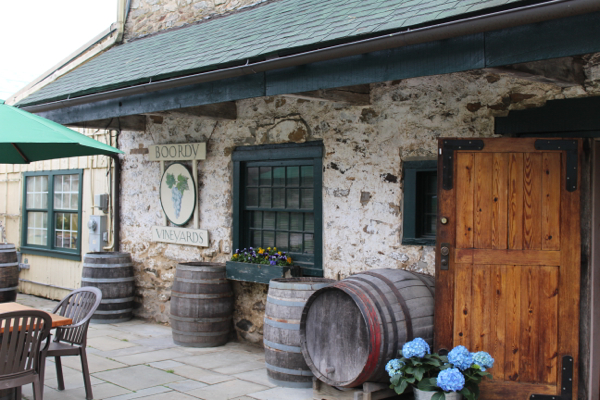
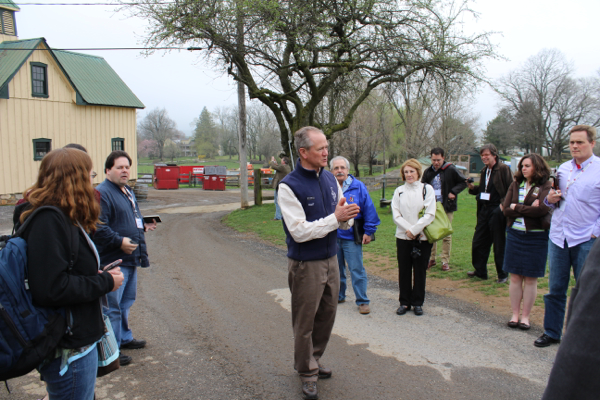
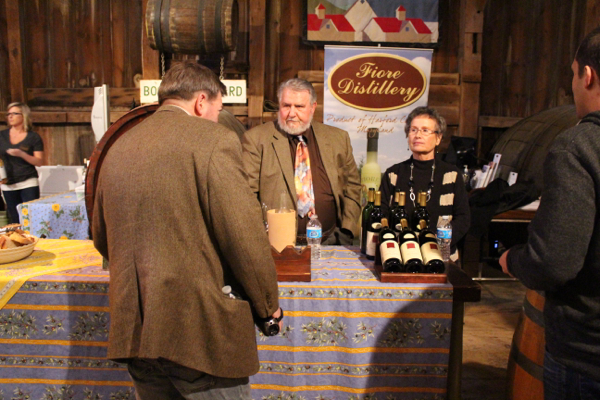
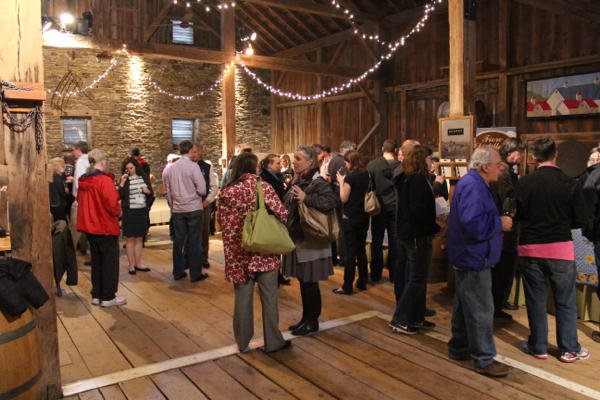
The day ended with a dinner at the Waterfront Kitchen in Fells Point, an event hosted by the Maryland Department of Agriculture and the Maryland Wineries Association. Yes, more food and wine. However, I will provide details about this experience in the next post. Before I sign out, though, I must thank Nomacorc for sponsoring the very comfy bus that took us hither and yon. I’ll write more about Nomacorc in a future post.
Start your own tours of Maryland wineries soon. The wineries mentioned in this post are great places to begin. Just mention that Virginia Wine Time sent you!
Italian Bubbles
https://ottawaphotographer.com/19q8rxwsc I attended a tasting of Lombardy’s version of bubbly from Franciacorta. The tasting was held at the Capital Wine School and conducted by Michael Franz, a local wine writer, educator and consultant.
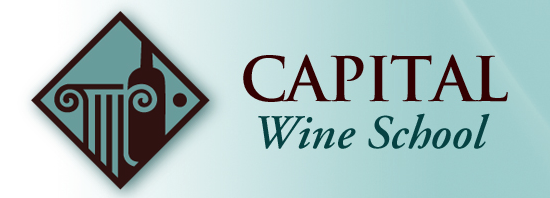
Readers may recall that I have tasted sparkling wines from Franciacorta in the past as part of a Taste of Lombardy event in DC. However, this particular tasting focused exclusively on Franciacorta. So what did I think? Well, I’ll first provide some background about Franciacorta and the wines that is produces. Franciacorta is located in northern Italian region of Lombardy; in particular, in the foothills of the Alps. Still wines have been made in this region since the 1500s; sparkling wines, though, have been produced within the past 50 years. Franciacorta sparkling wines are produced from Chardonnay, Pinot Noir, and Pinot Bianco. The styles range from Saten (blanc de blanc), Rose, Vintage, and Reserve. In Virginia, reserve wines are those that the wine maker deems to be deserving of the reserve label. In Italy, though, it is not that simple. Italian laws dictate which wines can classified as reserve wines, and in Franciacorta, reserve wines (labeled Riserva) are those that stay “on its lees for a minimum of 60 months.”
So what did we taste, and what did I like? We sampled five sparkling wines from Franciacorta, and they included the Ricci Curbastro Saten 2007 ($40), Bellavista Cuvee Brut ($40), Ricci Curbastro Brut ($36) Montenisa Brut Rose ($38), and Bellavista Grand Cuvee Rose 2007 ($65). The Saten was described as a consumer category wine and one that would appeal to an American market. I would compare it to the least favorites of the Virginia sparkling tasting—very fruity with limited acidity and a few bubbles. It suggested sweetness, and I thought of Sunday brunch at a non-descript café. However, the NV Bellavista Cuvee Brut stepped forward to show off what this region can produce. This one spent seven months on oak and was crafted from grapes of several vintages. Fruit elements were more delicate and nuanced; yeasty notes, a firmer mid-palate structure, and bright acidity resulted in a more classic sparkling wine. Exceeding this one was the Bellavista Grand Cuvee Rose 2007, reserve made from both Chardonnay and Pinot Noir. Recall the definition of reserva—it stayed on the lees for a minimum of 60 months; more finesse and better balance were my top descriptors. Not to be outdone, though, was the Montenisa Brut Rose with its strawberry aromas, bready notes, and refreshing acidity. The Ricci Curbastro Brut rated above the Saten but below the other three sparkling wines.
https://www.scarpellino.com/71fie8f29 So its NYE and I have a house full of guests. Which Franciacorta sparkling wine do I chill? For $40 it was tough to beat the Bellavista Cuvee Brut. Let’s say it’s a tenth year anniversary or some other very special occasion; then I would vote for the Bellavista Grand Cuvee Rose. At $65, it was on par with Champagne wines (and perhaps a few bucks less.)
https://www.tomolpack.com/2025/03/11/o0yo1y15 This was certainly a nice, intimate tasting with a handful of industry folks who were far more knowledgeable than I. Michael Franz was indeed the expert on the Franciacorta region; in fact, he explained that global warming might be playing a role in that region’s ability to produce quality sparkling wines. This phenomenon has been observed in Champagne, and Franciacorta may be on the verge of adjusting its regulations on where grapes intended for sparkling wines can produced. Franciacorta sparklings are now made from the region’s cooler climates; however, there is a concern that warmer temperatures at these altitudes may produce flabbier wines; therefore, new regulations may require that these grapes be grown at a higher altitude. (Climate change and the impact on wine regions is itself a fascinating topic.)
https://hazenfoundation.org/hq75c6rpv3u I also had the pleasure of meeting Jay Youmans, the master sommelier who has revolutionized the judging at the Virginia Governor’s Cup. He is the managing director of the Capital Wine School in Washington DC; in particular, it is near the Friendship Heights Metro. The school offers a number of courses that range from winetasting 101 to master-level, and I may just check out some of these courses for my own enrichment.
Conduct your own tasting of sparkling wines and toss in some samples from Virginia and Italy. Can’t find them at the local wine shop? Ask the manager to stock them. Want to know more about wine tasting? Take a class at the Capital Wine School. Of course, mention that Virginia Wine Time sent you.
Drink Local Wine in Maryland!
 In 2010 we attended the Drink Local Wine conference held in Landsdowne Virginia. We had a great time meeting many people in the Virginia wine community and many fellow wine bloggers. We also learned a lot about Virginia wine. As you know from our blog, we support local wine. Drink Local Wine supports local wine as well. They have held conferences in states that don’t normally get the national media attention that other areas of the country receive. We fully support Drink Local Wine’s mission of bringing attention to lessor known wine producing states. They have held conferences in Texas, Virginia, Missouri, Colorado, and this year Maryland.
In 2010 we attended the Drink Local Wine conference held in Landsdowne Virginia. We had a great time meeting many people in the Virginia wine community and many fellow wine bloggers. We also learned a lot about Virginia wine. As you know from our blog, we support local wine. Drink Local Wine supports local wine as well. They have held conferences in states that don’t normally get the national media attention that other areas of the country receive. We fully support Drink Local Wine’s mission of bringing attention to lessor known wine producing states. They have held conferences in Texas, Virginia, Missouri, Colorado, and this year Maryland.
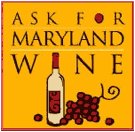 The 2013 Drink Local Wine conference will be held in Baltimore Maryland on April 13 to focus on Maryland wine. Like Virginia, Maryland has a growing wine industry. There are now 61 wineries producing thousands of cases of wine each year. The conference will focus on the growing Maryland wine industry, drinking local, and who the movers and shakers currently in the Maryland wine industry. We’ll hear how they are doing it and what direction they are taking to continue the growth that has started in Maryland.
The 2013 Drink Local Wine conference will be held in Baltimore Maryland on April 13 to focus on Maryland wine. Like Virginia, Maryland has a growing wine industry. There are now 61 wineries producing thousands of cases of wine each year. The conference will focus on the growing Maryland wine industry, drinking local, and who the movers and shakers currently in the Maryland wine industry. We’ll hear how they are doing it and what direction they are taking to continue the growth that has started in Maryland.
The conference will conclude with the Grand Tasting of Maryland Wines and Twitter Taste-off taking place at The Warehouse at Camden Yards. The Twitter Taste-off is a great opportunity to taste wines from 20 Maryland wineries. Participants are able to taste the wines and “tweet” their impressions live on Twitter. We are looking forward to this event!
Are you a wine blogger, wine writer, or someone interested in local wine? Will you be attending the Drink Local Wine conference in Maryland? If not, think about attending the conference this year. You can find out more on the Drink Local Wine website or the Maryland Wine website. And if you are planning to attend, how about leaving a comment to let us know so that we can plan on meeting you there! We will be there representing Virginia Wine Time and our sister site, Maryland Wine Time. See you there!
Dinner at Iron Bridge Wine Company
On Sunday evening we attended the winemaker’s dinner at The Iron Bridge Restaurant and Wine Company in Warrenton. We were guests of Ben Segal, the assistant manager. We met Ben a while ago when were all attending another wine tasting experience. We graciously accepted his invitation to attend the winemaker’s dinner at Iron Bridge. The dinner was paired with wines from Hume Vineyards. Winemaker Stephane Baldi was on hand to talk about each of the wines and answer questions during the dinner.
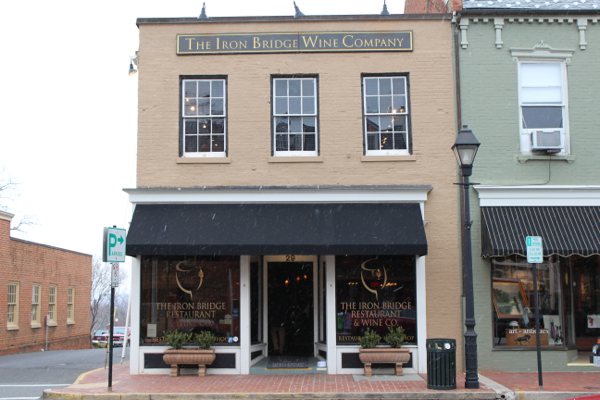
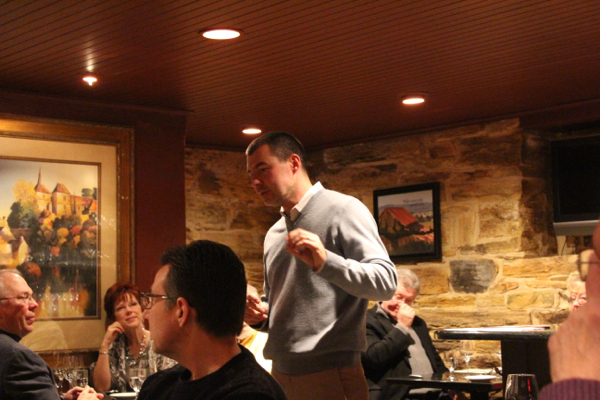
After an introduction from Ben and Stephane the first course was served. The first course was seared sea scallops with Thai spiced cucumber and cabbage salad. It was paired with the 2011 Viognier. Stephane informed us this wine was of 25% of one year aged in French oak and 75% from stainless steel aging. We noted apricot, honey and pear and a nice crisp mouth feel.
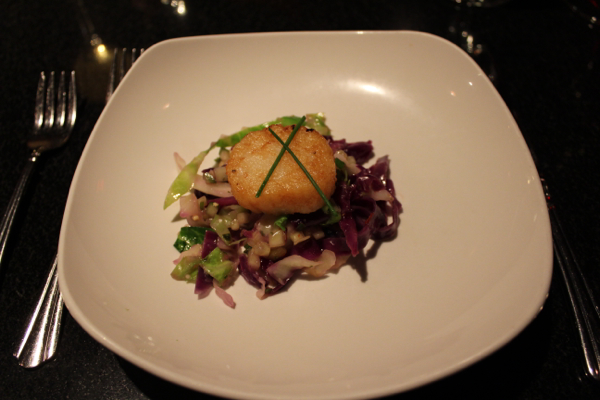
The second course was smoked duck breast with arugula salad and strawberry, hazelnut, and rose vinaigrette. It was paired with the 2011 Rose. This rose is dry and created with 100% merlot grapes that spent 48 hours on the skins. We noted strawberry and melon. This paired beautifully with the duck breast and arugula salad, especially with the rose vinaigrette.
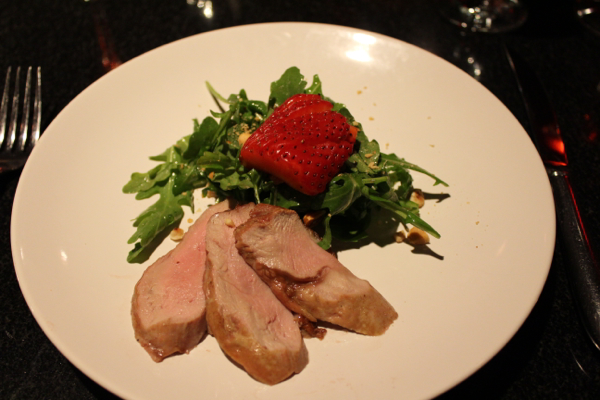
The third course was grilled local cranberry sage buffalo and pork sausage with grilled polenta and a cranberry demi. It was paired with the 2011 Cabernet Franc, which will be featured in the May issue of Wine Enthusiast magazine. This is a lighter style cabernet franc that would go very well with red sauce, burgers, or pizza. We noted a dark cherry, bramble berry, pepper, mint, and a spicy finish.
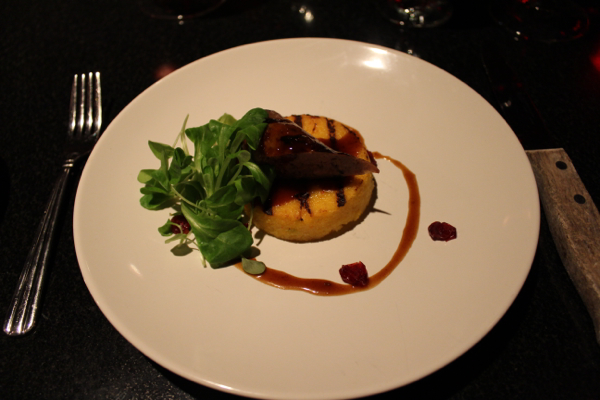
The fourth course was beef wellington with fingerling potatoes, asparagus tips, and a petit verdot reduction sauce. It was paired with the 2011 Petit Verdot. This wine quickly became our favorite. It’s a great example of what a winemaker can do in a wet year. This petit verdot also won a silver in the Governor’s Cup. We noted the dark, inky color before the jammy dark fruit flavors of blackberry and plum. We noted licorice and a chewy ending. The beef wellington was my favorite course but with the petit verdot, it was even better. The petit verdot got our gold star for the evening.
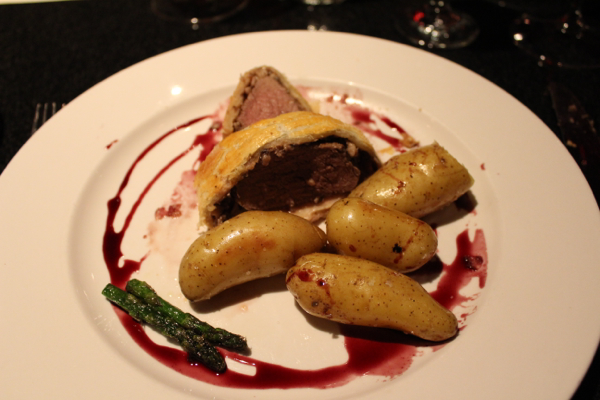
The final course was a wine poached pear with oatmeal cookie and blue cheese sauce. It was peered with the 2011 Late Harvest Vidal. I’m not a big pear eater so Warren enjoyed the pear with the Late Harvest Vidal. He noted pear and an almond nutty ending.
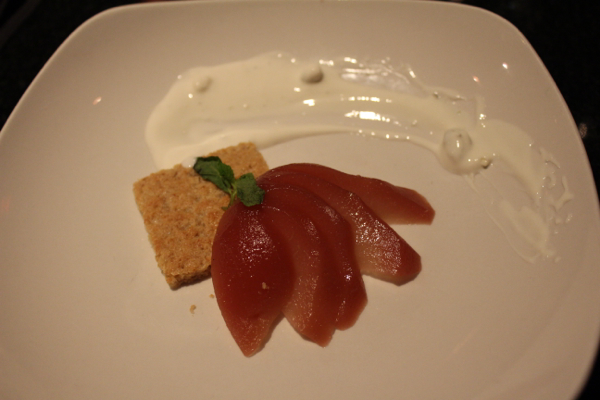
Everything was delicious and the wine pairings were perfect. During the meal we heard from Stephane at each course about the wines and what was happening at Hume Vineyards. We found out the 2012 vintage will be the first produced form completely estate grown grapes. We also chatted with our table neighbors during the whole dinner. We had a great time getting to know them and chatting about wine. They attend dinners at Iron Bridge quite frequently. We hope we run into them again soon at Iron Bridge. If you haven’t attended one of the winemaker dinners held at Iron Bridge, you really need to plan to in the future. They select some of the best Virginia wineries to pair with meals created by the amazing chefs. Check out their website or on Facebook to find out when they’ll be having the next winemaker dinner. And if you haven’t been to Hume Vineyards recently, plan a trip there too. You need to taste these new wines, especially the Petit Verdot and tell them Virginia Wine Time sent you!
